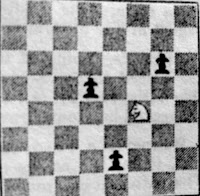Which Chess Piece do you think is the most valuable?
 |
| The King, The Queen, The Bishop, The Knight, The Rook, or the Pawn? |
There is a way that has compared the value of chess pieces from centuries back. It is quite reliable and quite convenient.
Why would we want to value one chess piece before another?
There are certain chess pieces, like the Queen and the Rook that can force a checkmate. The Bishop and the King can not enforce checkmate. Therefore the Queen and Rook are stronger chess pieces. The
comparative strength of chess pieces can be measured with a reliable table.
Queen ----------- 9 points
Rook ----------- 5 points
Bishop ----------- 3 points
Knight ----------- 3 points
Pawn ----------- 1 point
The Queen is the most important, strongest and most valuable player on the chess board.
This point system gives you great information as to what happens when a chess piece is captured. If the Queen is lost - you stand a chance of loosing the game by almost 100%!
Exchange - When an opponent captures one of your chess pieces and you capture one of his. The table above comes in handy to determine which chess piece to capture if you have a choice.
If you capture straight across, then no worries. A
Pawn for a Pawn, a Bishop for a Bishop is an even exchange because they are worth the same amount of points of strength.
You will not loose if your opponent captures your Bishop and you capture his Knight. Both of you lost the same strength, neither has lost more because the chess pieces have the same points.
It's simple to see: if you capture an opponent Rook, and he only gets a Pawn, you have gained the advantage. You have the stronger force. Once you understand the table, it is easy to apply.
The way to use the table of points above is to keep track of the points you have gained or lost. You will know whether you are ahead or behind and will be able to know how powerful you would be to force a checkmate.
Players who know they are weakened sometimes concede the game because they are too weak to force a checkmate. Do not let yourself get too weak, keep an eye on the points you have lost and won.
If you have lost your
Queen and do not have chess pieces to compensate for her powers, such as a
Bishop or
Knight, it is certain you will loose the game.
The
Rook is the second most valuable in strength and if you loose it, and have no others to make up for it, to compensate for your loss of strength, you will be loosing the game.
marblechessboard.com









































